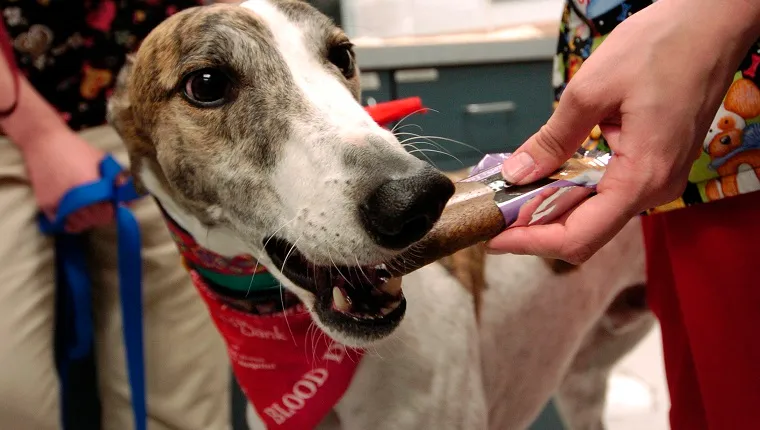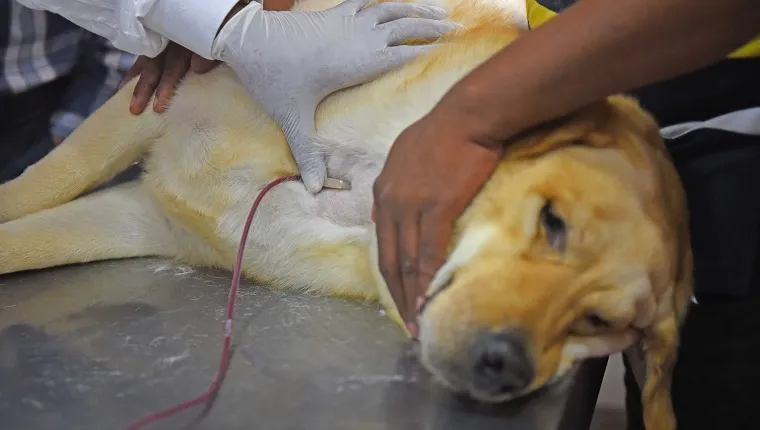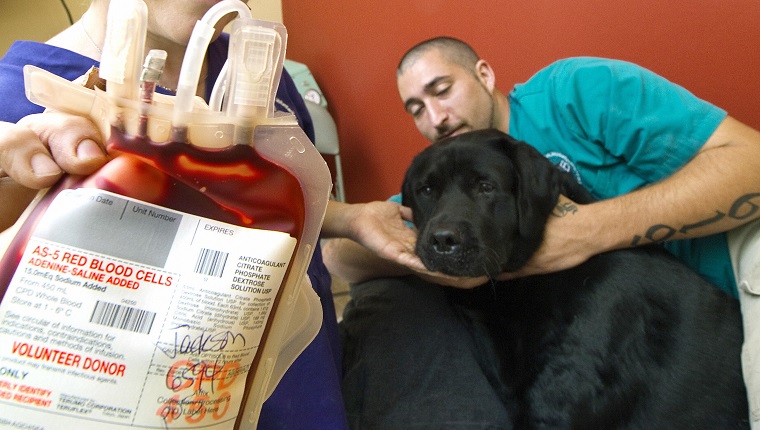You may have donated your own blood to help medical patients in need of blood transfusions, but dogs sometimes need to get blood transfusions, too.
Not many people think about donating their dog’s blood. After all, it can be pretty scary, even for humans who know it’s for a good cause.
However, if your dog is calm and comfortable around veterinarians and meets all the requirements to be a donor, a blood donation from your pup may end up saving the life of another dog in need.
World Blood Donor Day is celebrated on June 14th, and that might be a great opportunity to talk about donating blood. Although, any time is a good time to consider saving a life.
Please note that facilities that take blood donations may have different rules and requirements. Call ahead to your local facility and check to make sure that they’re accepting blood donations and that you’re following any new regulations.
If you and your dog would like to make a small sacrifice to help other pups, becoming a blood donor may be the right thing to do. Here’s what you should know about helping your dog donate blood.
Can Your Dog Donate Blood?

The first step in finding out whether your dog is eligible to donate blood is to talk to your veterinarian.
Some vets collect blood on site, while others send you to a blood bank or veterinary school to donate. Different areas have different regulations with regard to canine blood donations, and your vet will be a good source of information about local laws.
When it comes to eligibility, each facility has its own requirements.
Generally, eligible dogs must have a calm disposition for vet visits. They must be in good health, be free of any communicable diseases, have no signs of heart murmurs, and not be on medication other than flea or tick medicines.
Usually your dog has to weigh at least 50 to 55 pounds without being overweight, and they must be between the ages of one and seven or eight years old. If your dog doesn’t meet these requirements, you should still ask your vet about donation, as other facilities may not have the same rules.
Some blood donation facilities require your dog to have a universal donor blood type. Like humans, dogs can have any of five major blood types, and the universal donor type is the equivalent of the human O negative, though canine blood types are designated differently.
Short-haired dogs are also preferred, as there is minimal risk of contamination while drawing blood. Greyhounds are usually considered perfect for canine blood donations as they’re most likely to be the universal donor type, they are the proper size, and their short hair makes it easy to draw blood without contamination.
If your dog doesn’t have the universal donor blood type or you don’t know your dog’s blood type, you should still ask your vet about donation.
What Is The Blood Donation Process?

Dogs who may be eligible to donate blood will be screened for any blood-borne illnesses. The actual process of donating blood is very simple and only takes a few minutes.
Unlike humans who have blood drawn from the arm, the needle will be placed in the dog’s jugular in the neck. The vet or technician will begin by shaving and disinfecting the area to make the process easier and reduce the chance of contamination during the blood drawing.
The dog will be placed in a comfortable position, usually lying on their side, while one person holds their head in place gently. No anesthesia will be necessary. The vet or technician will insert the needle into the jugular. They may collect 250 to 450 ml of blood in one visit.
Once the donation is complete, the dog can go about their normal activities. They may want to take a nap afterward. A bump may appear at the site where the needle was placed, but it should disappear fairly quickly.
What Happens After Your Dog Donates Blood?
Dogs who donate blood are usually given plenty of treats, as they can’t eat cookies like humans. Some vets provide an incentive to donate blood by giving a credit for future medical treatment. You should ask your vet if they do this.
Dogs who are good candidates for blood donation may be asked to be repeat donors. The dogs who donate 250 ml of blood can donate again within ten to 14 days. Dogs who donate 450 ml of blood can return after three to four weeks.
Most donors make donations every two months or so and usually don’t donate more than six times per year.
If you and your dog make the decision to donate blood, you should know that you are saving lives. Vets often desperately need donations, and canine blood has a shelf life of only 30 to 40 days.
One 250 ml donation can save a 30 to 40 pound dog’s life depending on the condition being treated. Small dogs obviously require less blood during transfusions while larger dogs need more.
If your friends ask about the shaved spot on your dog’s neck, it can be a good opportunity to spread the word about canine blood donations and to take pride in your dog’s brave sacrifice.
Has your dog ever donated blood? Would you recommend blood donation to other dog parents? In honor of World Blood Donor Day, let us know in the comments below!









